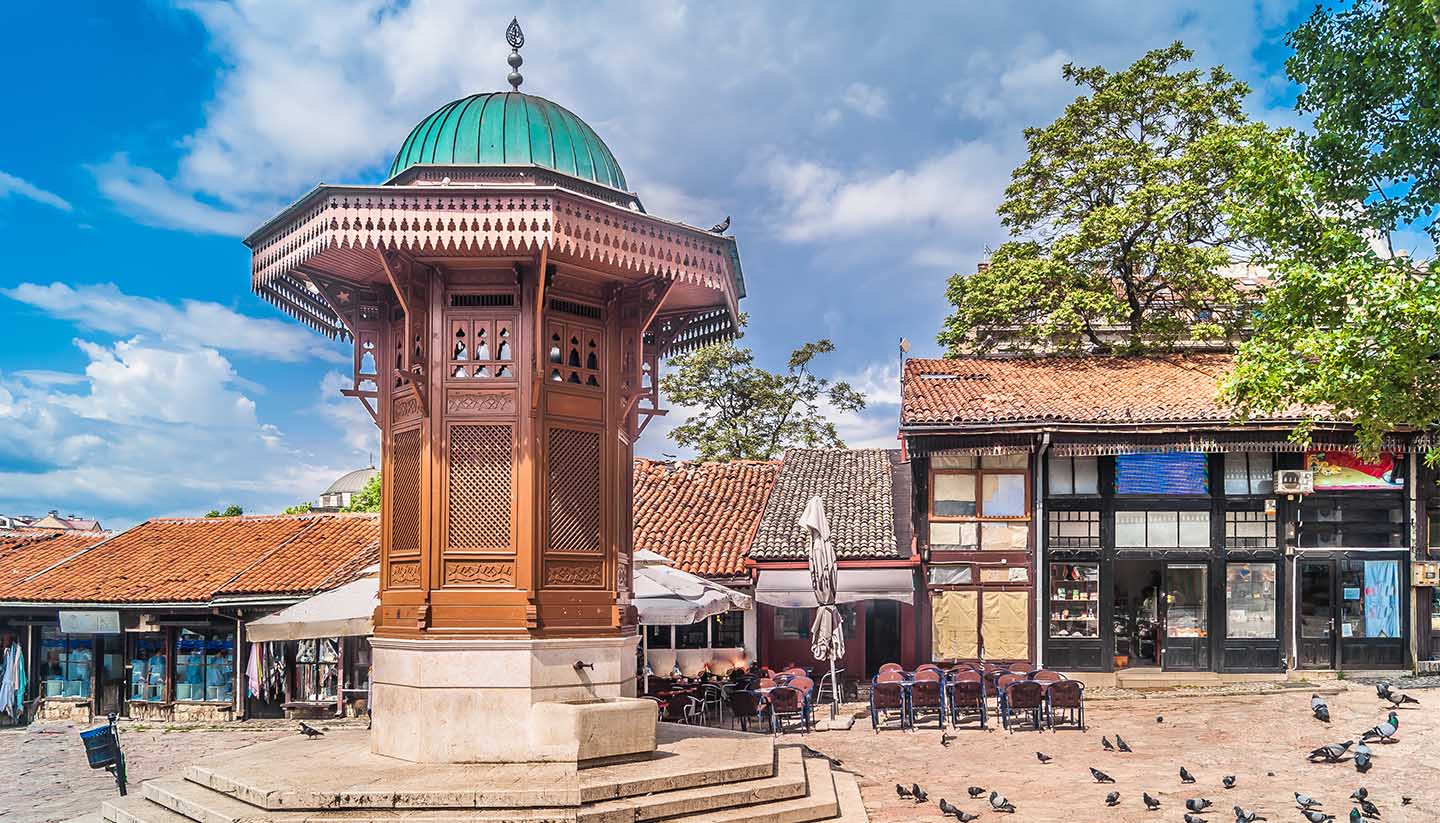Bosnia and Herzegovina History, Language and Culture
History of Bosnia and Herzegovina
Once part of the Roman province of Dalmatia, modern-day Bosnia was briefly occupied by Goths, until it became an outpost in the Byzantine Empire during the Middle Ages for some six centuries.
From 1180, when Byzantine rule came to an end, and by 1463, when the Ottoman Turks took control, Bosnia was more or less an independent state under a succession of strong rulers who expanded the territory southwards to take in the province of Hum (now Herzegovina).
As a province of the Ottoman Empire, Bosnia and Herzegovina had two distinguishing characteristics: firstly, much of the population converted to Islam; secondly, as a frontier province, it was the first line of defence against incursions into the Ottoman sphere of influence. Consequently, the country suffered from repeated invasions.
Under pressure from the Austrians, Ottoman rule began to weaken during the 18th and 19th centuries, until the Turks were expelled following the Russo/Serbian-Turkish war of 1876, and Bosnia was assigned to the Austro-Hungarian Empire by the Congress of Berlin. The decision by Vienna to annex Bosnia fully in 1908 produced a destabilising chain of events contributing to the First Balkan war of 1912-1913, then to the assassination of the Austrian Archduke Franz Ferdinand in the Bosnian capital, Sarajevo, by a Serb revolutionary, Gavrilo Princip. This assassinating in June 1914 is considered by many the trigger for WWI.
At the end of the war, with the approval of the victorious Great Powers, Serbia annexed Bosnia as part of the new Kingdom of Serbs, Croats and Slovenes, which was renamed Yugoslavia in 1929. Following the Communist take-over in 1945, Bosnia and Herzegovina became a constituent republic of the new Yugoslav federation. The ethnic rivalries characteristic of the region's politics were largely kept at bay during this era, before unravelling tragically in the 1990s.
With a population split almost equally three ways between Serbs, Croats and Muslims, Bosnia became a key battleground as Yugoslavia disintegrated, until NATO forces intervened to stop the ethnic cleansing that was taking place. Peace has largely held since then – despite rival ethnic nationalists gaining ground in the 2014 general election. However, the country's economic frailty is arguably of more concern to today's population.
Did you know?
• Lasting longer than the siege of any other capital city in modern history, the Siege of Sarajevo endured from 1992 to 1996 – a year longer than the Siege of Leningrad.
• The 1984 Winter Olympics were held in Sarajevo, but during the 1990s the infrastructure (think ski runs, bobsled courses, etc.) was used as target practice by the Serbian Army.
• The 2014 FIFA World Cup was Bosnia and Herzegovina’s first major football tournament.
Bosnia and Herzegovina Culture
Religion in Bosnia and Herzegovina
45% Muslim, 36% Orthodox, 15% Roman Catholic, 4% Protestant, Jews and other denominations.
Social Conventions in Bosnia and Herzegovina
Bosnia and Herzegovina is characterised by its ethnic and religious diversity and visitors should respect the customs and traditions of the various ethnic and religious groups. The main ethnic groups are the Bosniaks (48%, also sometimes referred to as Bosnian Muslims), the Serbs (37.1%) and the Croats (14.3%). Visitors should be aware that drinking alcohol in public may be considered offensive by more orthodox Muslims. Visitors should avoid expressing opinions about the war or other sensitive issues.
Language in Bosnia and Herzegovina
The official languages are Bosnian, Serbian and Croatian. The Croats and Bosniaks use the Latin alphabet, whereas the Serbs use the Cyrillic.


